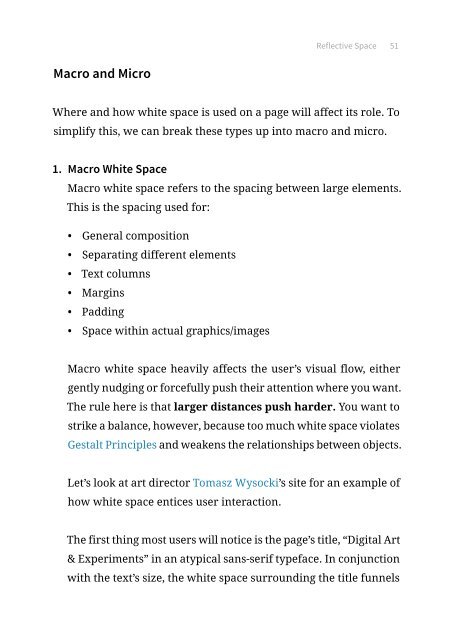Interaction Design Trends 2015 & 2016
Create successful ePaper yourself
Turn your PDF publications into a flip-book with our unique Google optimized e-Paper software.
Reflective Space 51<br />
Macro and Micro<br />
Where and how white space is used on a page will affect its role. To<br />
simplify this, we can break these types up into macro and micro.<br />
1. Macro White Space<br />
Macro white space refers to the spacing between large elements.<br />
This is the spacing used for:<br />
• General composition<br />
• Separating different elements<br />
• Text columns<br />
• Margins<br />
• Padding<br />
• Space within actual graphics/images<br />
Macro white space heavily affects the user’s visual flow, either<br />
gently nudging or forcefully push their attention where you want.<br />
The rule here is that larger distances push harder. You want to<br />
strike a balance, however, because too much white space violates<br />
Gestalt Principles and weakens the relationships between objects.<br />
Let’s look at art director Tomasz Wysocki’s site for an example of<br />
how white space entices user interaction.<br />
The first thing most users will notice is the page’s title, “Digital Art<br />
& Experiments” in an atypical sans-serif typeface. In conjunction<br />
with the text’s size, the white space surrounding the title funnels


